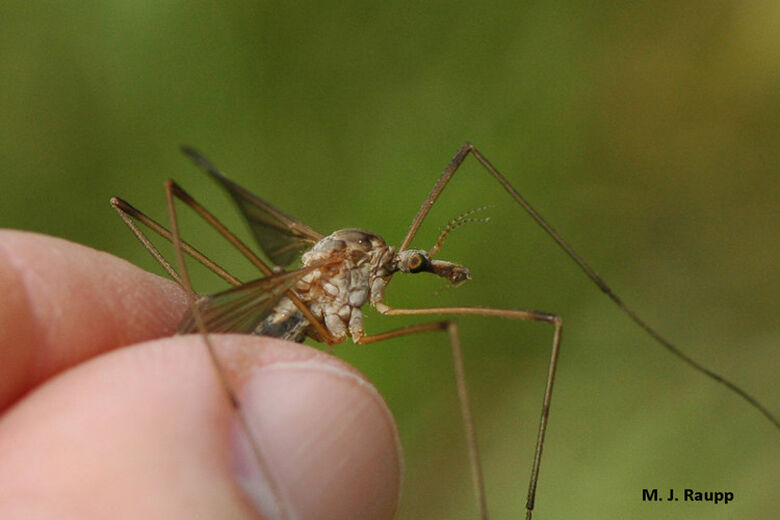Crane flies look like mosquitoes with long legs, and they can be seen flying around homes in the D.C. region.
The bugs can be seen in big numbers, and “The Bug Guy” Mike Raupp, professor emeritus at the University of Maryland, said that’s thanks to the rain the region received in the spring.
Raupp believes lots of rain led to more decaying plant matter later in the year, and that’s an environment in which the crane fly thrives during its younger stages of life.
“That’s gonna be the perfect conditions for these leather jacket larvae or maggots,” Raupp said.

He said the bugs in the maggot or “leather jacket” stage are beneficial, as they help break down decaying matter. The bug is unique because not all of them feed on decaying matter.
“These guys are going to help decompose all that vegetation that’s been forming out there, and add those nutrients back to the food chain,” Raupp said.
However, not all young crane flies feast on dead vegetation. Some are aquatic and live in streams, where they hunt other small invertebrates. Others can be considered pests, as they feed on the roots of grass.
Once they develop into adults, they take flight; but even though they look like “mosquitoes on steroids,” according to Raupp, they aren’t harmful to humans.
“They’re not going to bite you; they’re not going to carry away your children by their ears,” Raupp said.
While a lot remains unknown about their eating habits as adults, Raupp said it is believed they feed on nectar and pollen once fully grown. For an adult crane fly there is one major goal: taking the steps necessary to bring about the next generation of crane fly.








